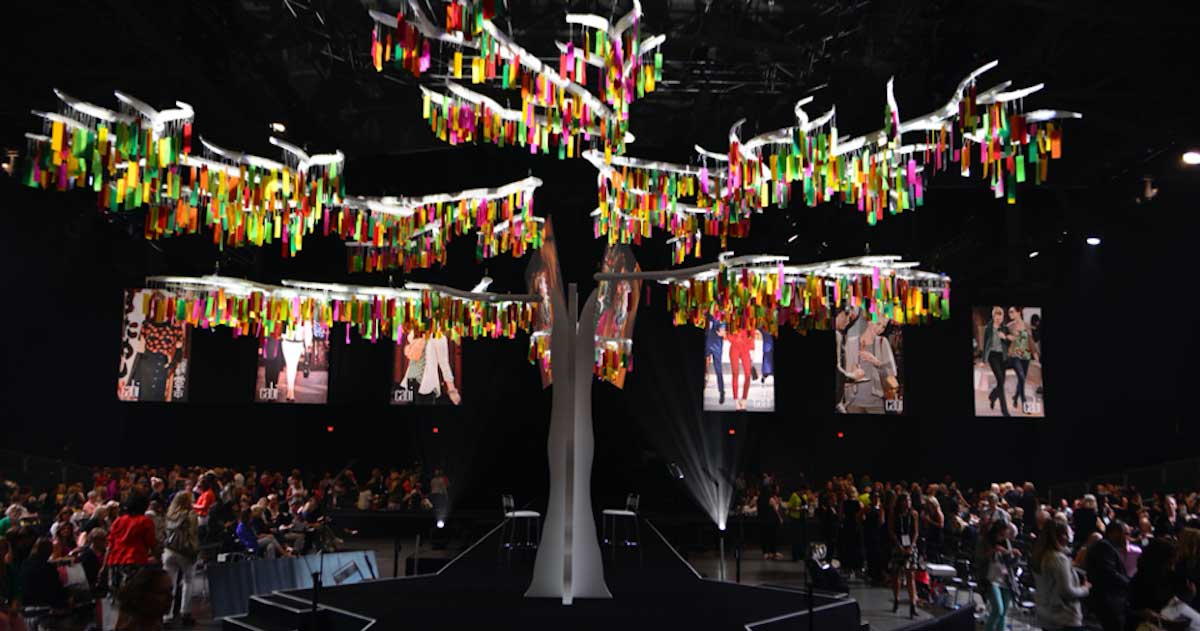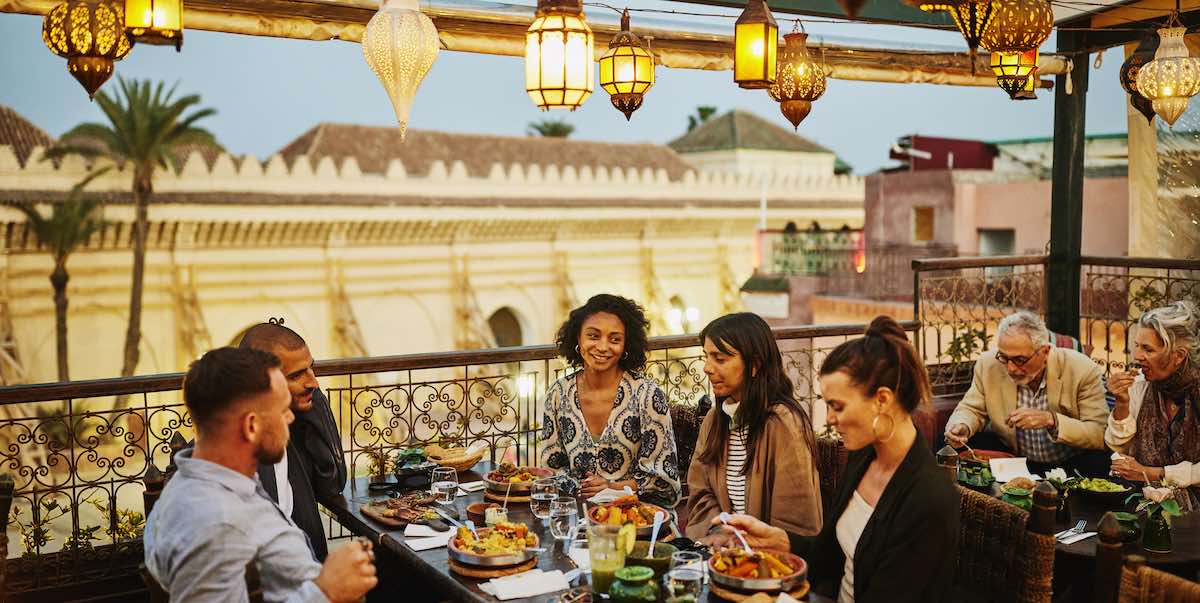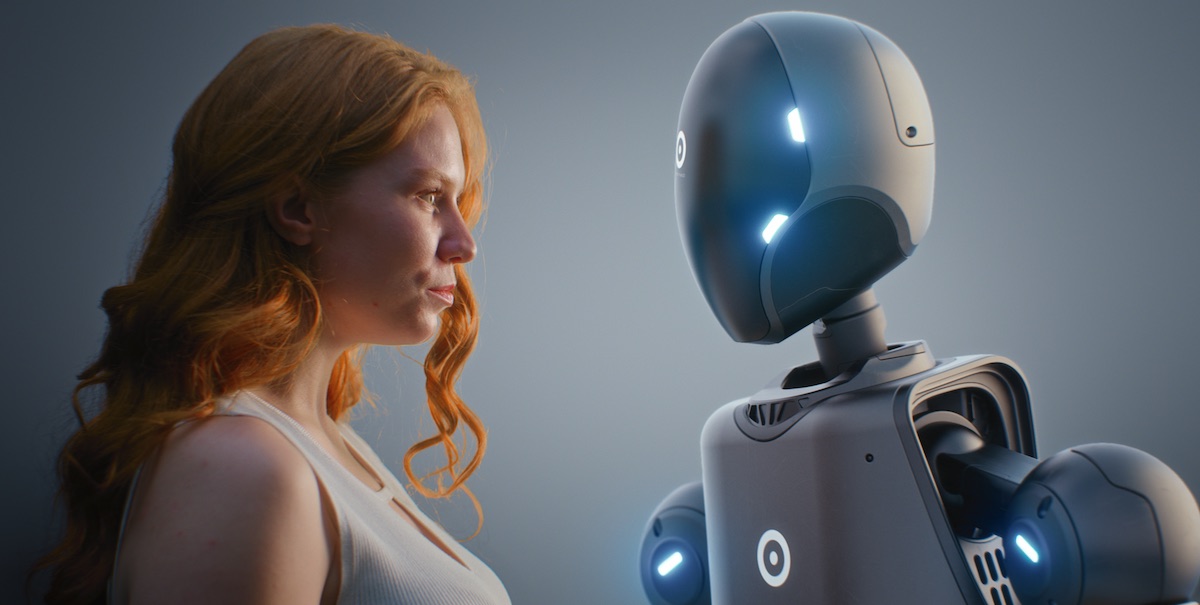When researching One Smooth Stone, an event and communication agency based outside of Chicago, one thing that immediately stands out is their commitment to “serve as audience advocates. We see the entire experience from the perspective of your audience, ensuring it exceeds their expectations and builds your brand.”
This is music to the ears of any experience designer, who, in balancing the needs of the brand and stakeholders, is often forced to leave the audience as the last priority. Mark Ledogar, president of One Smooth Stone (a PRA event and communications agency), tells us about their design perspectives for an in-person event and their digital deliveries to surprise and delight participants.
You’ve worked with brands from nearly all industry verticals throughout your 25-year history. What recent project stands out to you as a noteworthy example in experience design?
Mark Ledogar: We’ve enjoyed a 15-year relationship with fashion brand cabi. Cabi distributes through individual sellers (stylists) mainly via in-home appointments and online appointments and gatherings using a multi-level marketing (MLM) structure. As a fashion company, their designs are on a six-month cycle, so they hold twice-yearly events called “The Scoop” to get the latest trends to the sellers as soon as possible. As their event production agency, we are redesigning their event experience every six months for the 2,500 stylists who attend The Scoop. And while every semi-annual is customized and highly experiential, our cabi Scoop in Boston comes to mind as being an especially effective example of great experience design.
What is your approach, and how did you frame up the event for this particular situation?
ML: We started with a creative brief, addressing the key messages and issues for this season and what is weighing on the team. For this particular season, the clients had a concern about consumer behavior transforming to more digital. Recruiting was becoming harder because the economy was thriving, so independent contractors were sparse. We also always need to inform the event design by that season’s clothing line. We landed on inspiration in the culture and traditions of Japan, which was the featured location and inspiration of the coming season’s line. We used a focal image of a Tanabata tree, onto which the Japanese tie ribbons representing their worries with the promise that the winds blow them away.
How did you evolve the symbol into a participatory element at the conference?
ML: We built a large Tanabata tree as the center stage set and started by showing the tree with no ribbons. When the stylists broke into regions for individual meetings, we deconstructed the main tree and moved each of the 10 branches to the 10 subgroup gatherings, where participants wrote their concerns for the coming months on a ribbon and tied it to the trees as a demonstration of their release of their worries. Then, as attendees transitioned from breakout session back to the general session, we quickly reassembled the ribbon-filled branches to the main tree back at center stage.
I can imagine the beauty of that enormous tree with all the ribbons. How did it stir the audience’s emotional reaction?
ML: When the group reconvened, there was an audible, emotional wow where they all felt united and supported in their individual and communal ability to share their concerns. The tree symbolized the collective empathy of the community and the support of cabi. This empathy merged together to inspire the creative, and the tree was the immersive canopy for the remainder of the event. In the post-event results, we heard of many stylists who recreated this experience by giving their home-hosts ribbons of their own, as well as carrying them personally long after the event. They became a symbol and lasting theme throughout the season.
What were some challenges you faced with the event and how did you overcome them?
ML: The deconstruction and reconstruction of a 16’ x 30’ tree in less than an hour is no small undertaking. Significant work went into creating the deconstruction and reconstruction plan, and multiple technical rehearsals were staged with stopwatch in hand. Initially, we did all of this without seeking the input from local labor, who was integral to the process. After several unsuccessful attempts to meet our timing goals, we invited our local labor team members to offer their advice and, essentially, join us in owning the outcome. This invitation won their buy-in, capitalized on their expertise and gave us the opportunity to tell the story behind the tree and invite them into creating a memorable experience for our shared client and their attendees. The union workers became highly invested in the why behind our efforts and shared in the outcome. Our lesson was the need to broaden the team to get their investment and it will yield a better outcome.
EXPERIENCE DESIGN IN THE DIGITAL SPACE
For more than 25 years, One Smooth Stone has crafted audience-centric business events from a foundation of values like honesty, respect and integrity. They embrace a creative environment in which assumptions are challenged with respect, questions are freely asked, discussion is open and listening is foundational. Their suite of digital offerings has exploded in 2020, and Ledogar described to us how they keep the core principles of experience design alive in the digital delivery.
“Creating an immersive environment digitally is tough given all the distractions,” he says. “In a live experience we can fully control the environments, but online it’s harder to keep their attention.”
He says One Smooth Stone has found ways to embrace multi-sensory channels in the digital space, putting smell, taste and touch in the hands of the remote attendee. For example, they send digital experience boxes to attendees, instructing them in the programming when to open each one and what to do with the contents. The physical elements become part of the online programming.
They’ve infused another experiential element into digital awards ceremonies. Unbeknownst to the winner, they will send the award to a neighbor or family member. When the winner is announced online, the friend is cued to surprise them with the physical award. For incentive programs in general, One Smooth Stone involves a shout-out or gift to the winner’s family, since top achievers’ success is so often a family effort.
LEVEL UP YOUR EXPERIENCE DESIGN
Join our online Experiential Marketers and Designers Community, and if you’re not an MPI member, learn more about joining and the value of belonging to this community.
If you’re ready to take the next step in experience design, enroll in one of our upcoming Event Design Certificate courses today.
Each month during 2020, Annette Gregg, CMM, MBA, senior vice president of experience for MPI, interviewed MPI members to highlight some of the best examples of event experience design (or user-centered design) across the globe. Read the other reports via past issues of The Meeting Professional and on the MPI blog.







